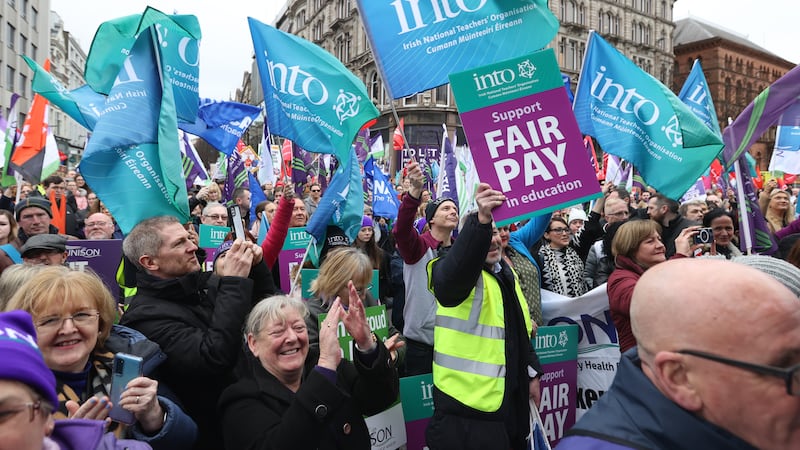The story of the Northern Ireland economy in 2023 has been one of rising costs and falling living standards.
Surging wholesale energy prices across the globe has driven up the cost of virtually every aspect of life, from food to transport, making it more expensive to do business.
In turn, the costs have generally been passed onto the consumer, prompting workers to demand higher pay.
Against a backdrop of the north’s tightest labour market on record (2.1% unemployment), employers in many sectors have been left with little option other than to hike rates of pay to fill vacancies, increasing their costs and in turn driving prices up further.
This has been the story of the economy and the dilemma facing the Bank of England for two years now.
We began 2023 with double digit inflation (10.1%).
The response from the Bank has been to gradually increase the base rate from 3.5% in January to 5.25% at the end of this year.
It has appeared to work, with inflation easing to 3.9% at the end of the year.
There is no doubt things are more stable when compared to the turmoil of 12 months ago, and the financial crisis sparked by Liz Truss’ 49 days in Downing Street.
Diesel, petrol and home heating prices are all lower than they were in January.
Yet, taken over the longer term, prices are still much higher than several years ago.
Higher mortgage rates and rent; steep tax rises; and an economy, which has largely stagnated; mean living standards will continue to suffer as we enter 2024.
So what about wages?
HMRC’s data tells us that the median monthly pay in Northern Ireland stood at £2,064 in the three months to November 2023, just 2.3% higher than the same period last year.
This time last year, wages had increased 7.5% year-on-year, which tells us that the big pay hikes for workers is at an end.
Pay increases for public sector workers were more modest, complicated by the crisis in public finances and political stalemate at Stormont.
Unions are still in dispute over the 2022 pay award for civil servants, which worked out at around 1.9% for the typical worker.
And they have been told that negotiations on the 2023 pay award cannot start until the power-sharing it settled and there is clarity on the north’s budget.
The result has been a year of strikes across the health, education and transport sectors that look set to continue into the New Year.
The public sector in Northern Ireland accounts for 27% of all jobs, compared to 18% for the UK as a whole.
And in many cases, pay rates are falling well below standards seen in Britain and the Republic.
Teachers for example, who have not had a pay rise for nearly three years, start on £24,000 a year here, around £6,000 behind England, £7,000 behind Wales and £8,000 behind Scotland.
It’s not difficult to see why they will be among the first public sector workers in the north to strike in 2024.






